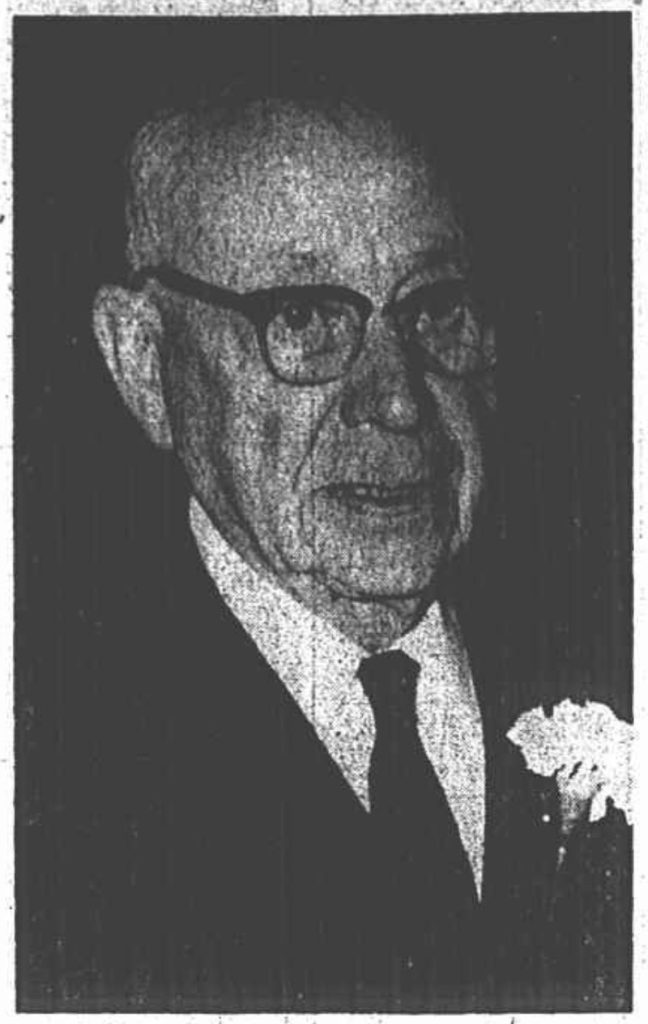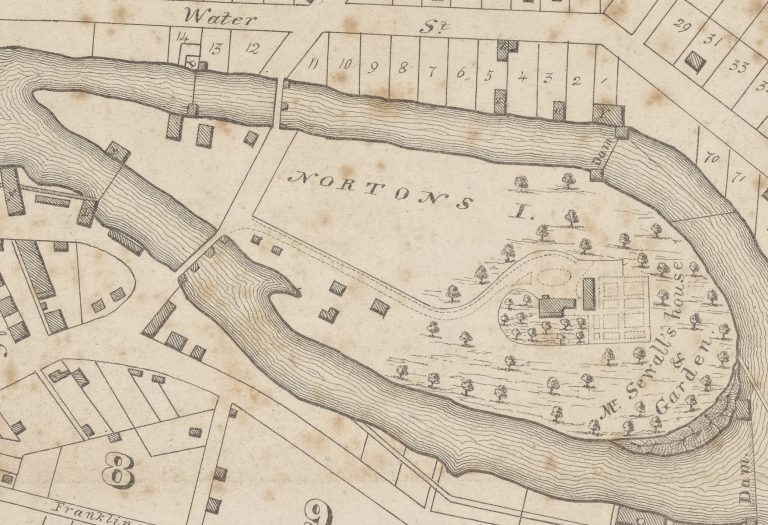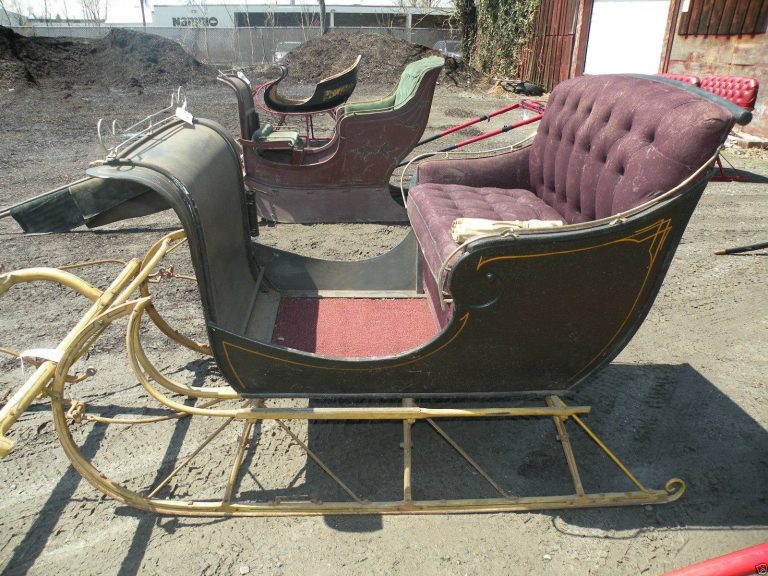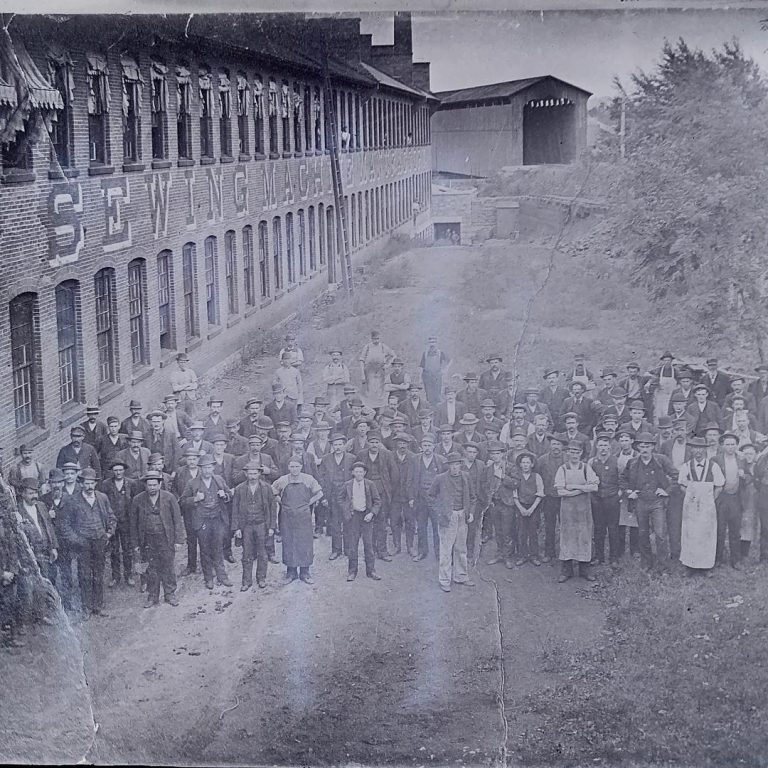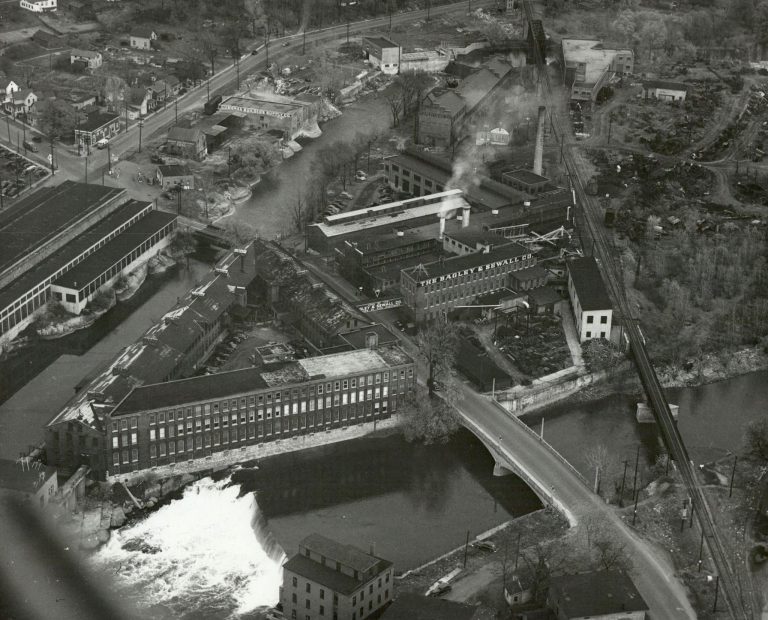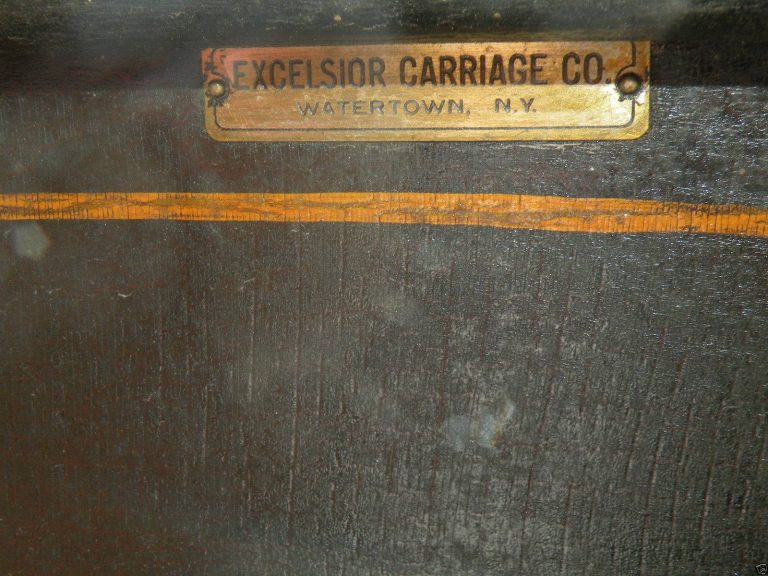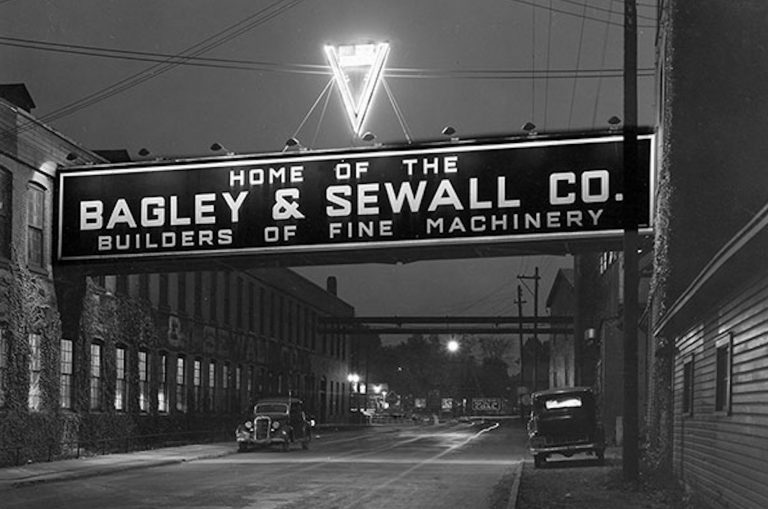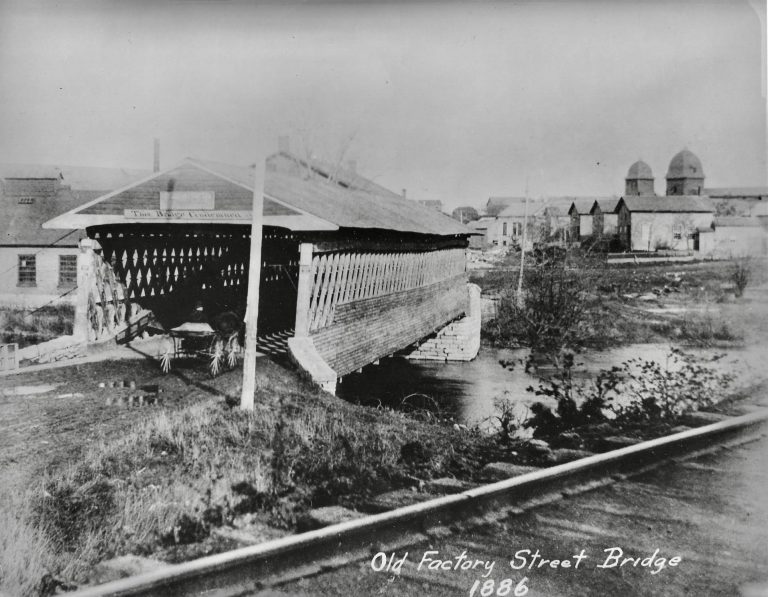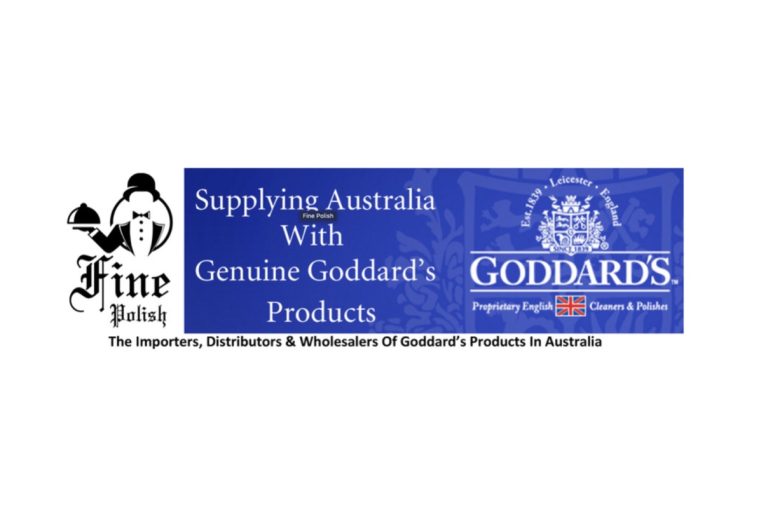Watertown Carriage Company Forms in 1889, Changes Name Excelsior Carriage The Same Year
Well before it became Sewall Island and home to manufacturers Excelsior Carriage and the Bagley & Sewall Co, later Black Clawson, and the Remington Paper Mill, the island located between Factory and Pearl Streets was called Norton’s Island, after Birdsey Norton. Norton’s daughter, Mary Catherine, married Henry Sewall, and they made their home in a stone mansion on the island. They also built the original structure of the Bagley & Sewall shop.
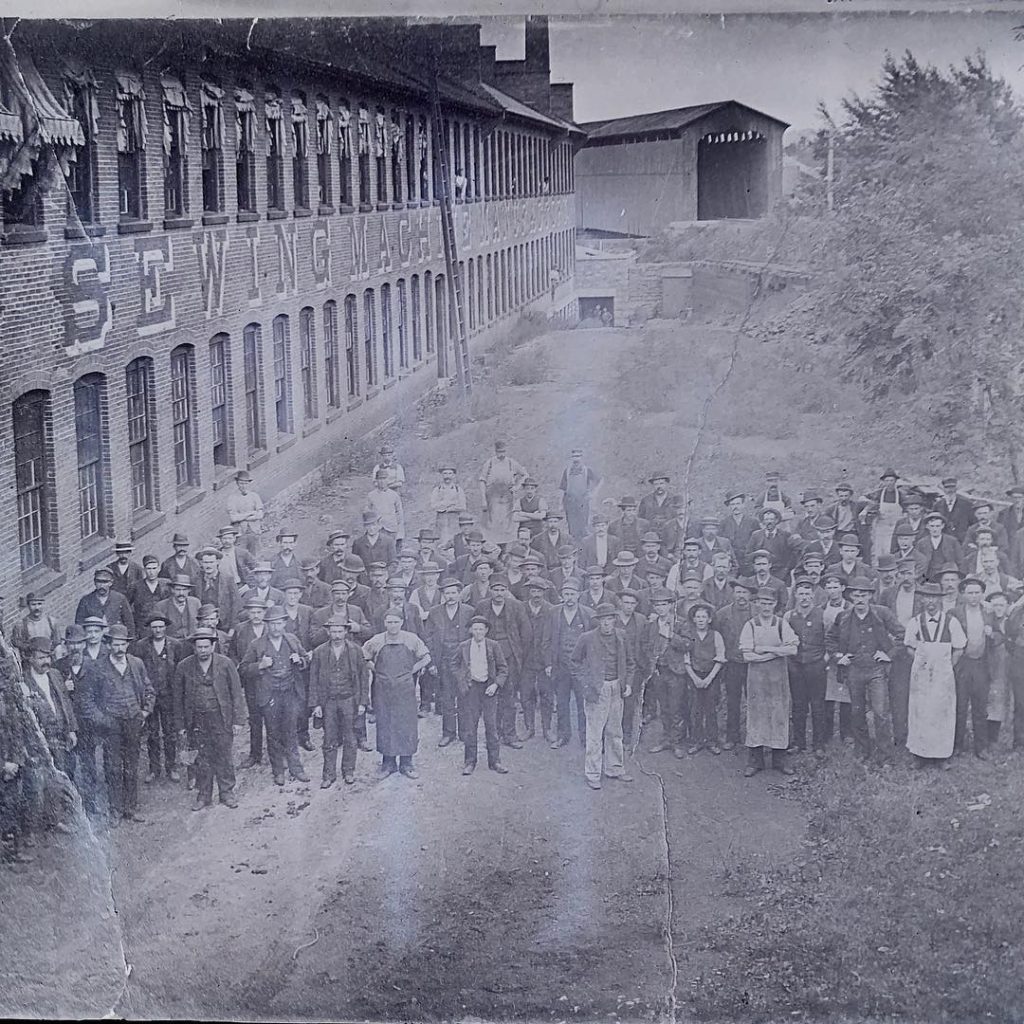
In 1889, the Watertown Carriage Company formed and occupied the building formerly used by the Davis Sewing Company before they relocated to Factory Square. In 1890, they eventually left Watertown altogether for Dayton, Ohio. In December of 1889, the Watertown Carriage Company’s application to change its corporate name to Excelsior Carriage Company was approved by the Supreme Court in Jefferson County, with the Watertown Re-Union and The Daily Times printing the notice once a week for six weeks.
In 1891, Excelsior Carriage, led by President George B. Massey, published its previous year’s annual report. The capital stock, paid in full, was $50,000; its debt totaled $45,380.26. Profits increased year over year as business soared. By March 1895, the busy season had begun, with lots shipped to Maine and another to New Hampshire.
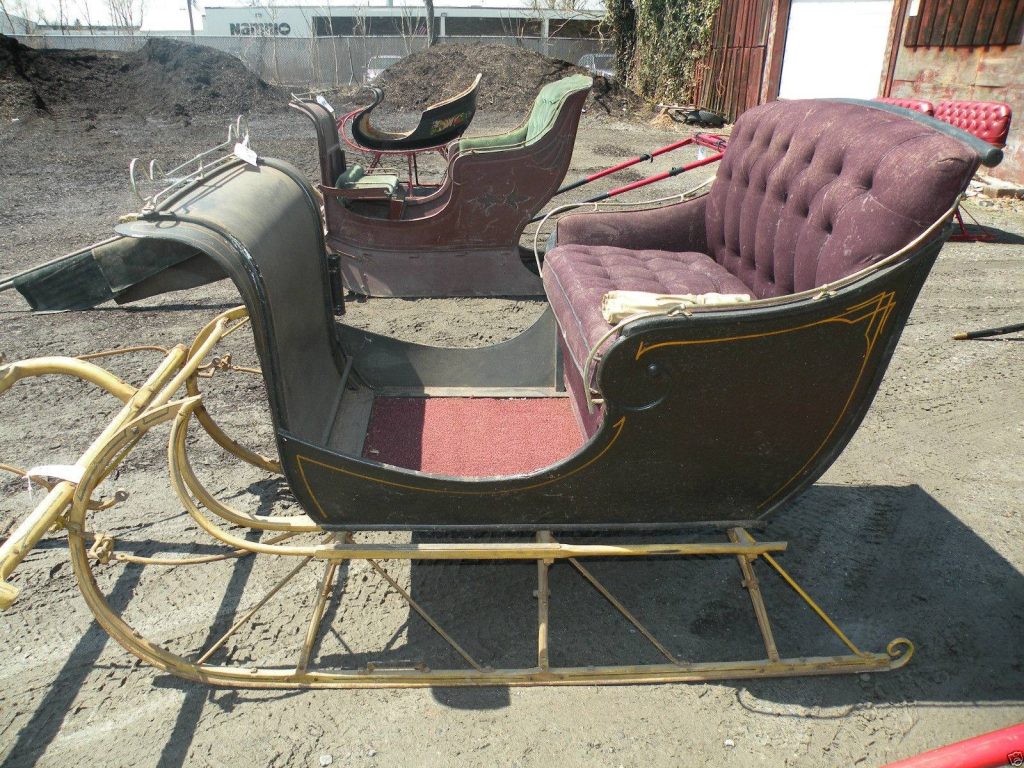
With a full force of 100 men working ten-hour days, prospects were bright for a profitable year. While its capital stock remained the same over the course of its five years at $50,000, its debts rose to $68,368.71—but its assets had grown to $164,156.44. Four years later, the Watertown Daily Times wrote of its rising business in a February 24th, 1900 article—
The Excelsior Carriage company’s affairs were never in more prosperous condition. The books are portly with orders and the prices good. Business is better than ever before.
The sleigh and cutter business is closed for the season. A total of 550 sleighs were constructed, all being sold, with the excess demand that could not be accommodated.

The force is now turning out carriages, which are, in fact, already being shipped. As large a force as the works will accommodate is employed and they are working overtime in order to keep up with the orders. The prospects for the biggest of record-breaking years are of the best.
To say that pneumatic work leads is putting it mildly. The popularity of pneumatic tires is nothing short of remarkable. They will have a bigger boom the coming season than ever before. This year’s trade, the company is confident, will be double that of last.
Of course, it was also around this time that the winds of change began to blow as the automobile, first successfully driven as a gasoline engine in the United States in 1893, became popular. Between 1900 and 1915, the number of automobiles exploded from a mere 8,000 to approximately 2 million. In 1904, Excelsior Carriage output was 2,500 carriages annually—still near its zenith in production, yet far behind the H. H. Babcock Co. and certain to plummet with the onset of the car.
In 1905, the Excelsior Carriage Co. lost one of its founders and first directors, Edmund Sewall Goodale, who died unexpectedly at the age of 49 from heart disease five hours after being stricken while at the New York Athletic Club in New York City, where he was a non-resident member. Goodale was a prominent Watertown citizen his entire life, despite having an active partnership in the Syracuse clothier business of Woodhull, Goodale & Bull.
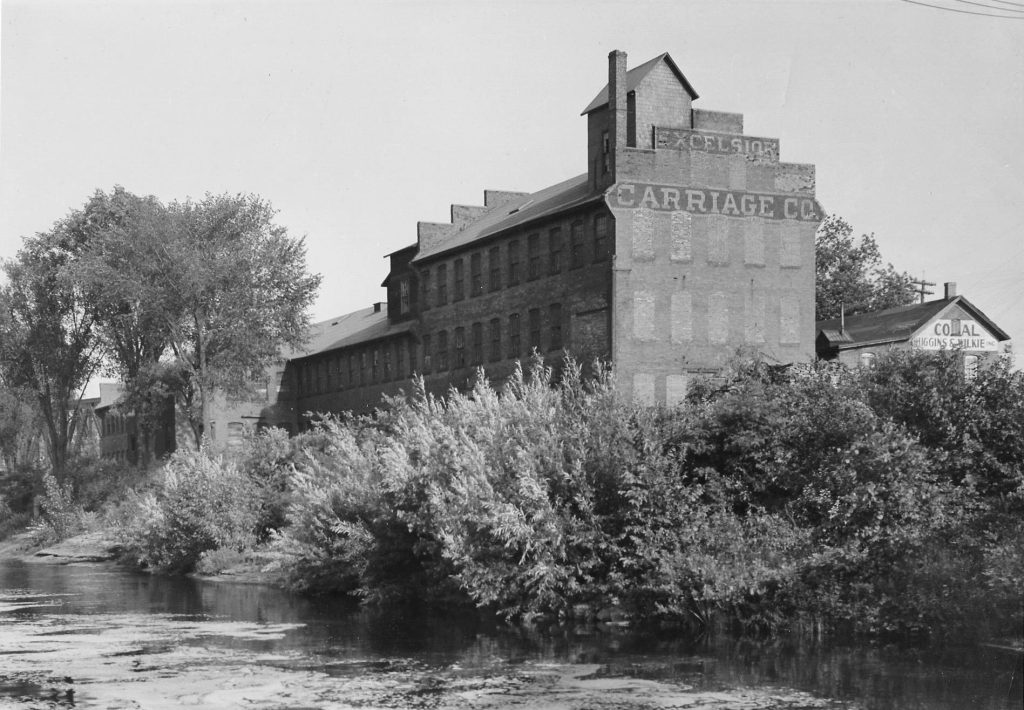
The Excelsior Carriage Co. announced its venture into automobile manufacturing on January 16, 1910, several years after the H. H. Babcock Co. had pivoted to do the same under son George H. Babcock’s leadership. Both would combine to provide 30-40 automobiles for local shows before visiting Syracuse for exhibitions.
Unsurprisingly, the increase in the number of automobiles also increased the number of accidents on city streets. Just as unsurprisingly, the accidents gave the makers opportunities to point to the quality of the build of their vehicles. On April 8, 1910, The Times wrote of one such incident on Factory Street—
The delivery auto manufactured by the Excelsior Carriage Co. proved itself equal to hard usage when a new car just out of the shop took a four foot drop over the bank on Factory Street this morning and escaped with no more serious injury than a broken wheel.
The car, of the city delivery type, with covered top, was being towed from the carriage factory on Sewall’s Island to the Armory, where it was to be exhibited in the auto show.
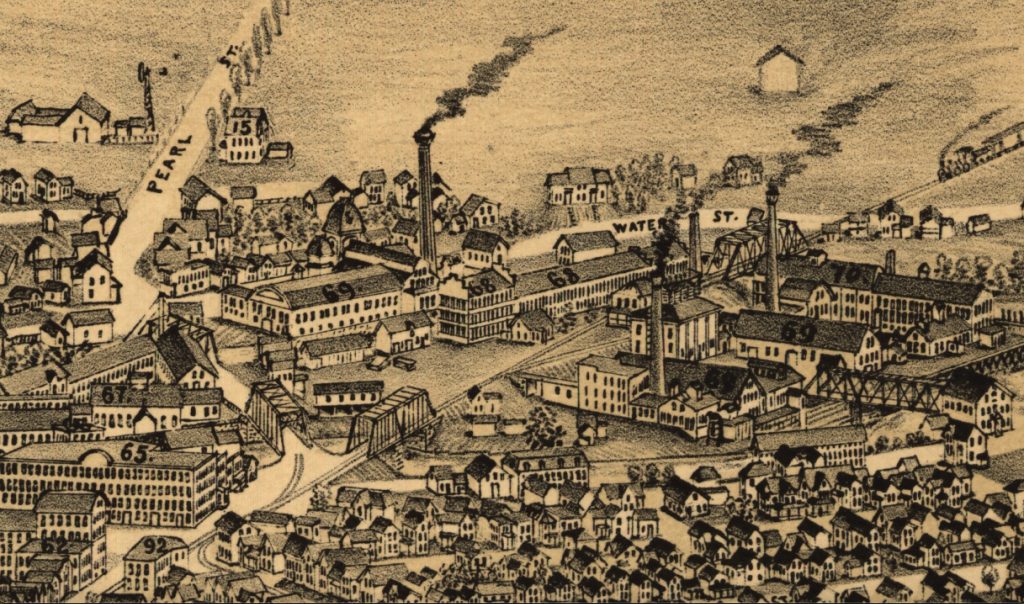
A short distance above the Factory Street plant of the New York Air Brake Co., on the right hand side the roadway has been graded high above the houses, the walk level being in places some four or more feet below the street. A perpendicular wall rises from the edge of the walk to the road.
As the car, running at what would be a slow trot, reached a point opposite this depression, the one in tow swerved and as Mr. (Henry B.) Leak attempted to bring it about with the steering wheel, it swung to the right with a sort of snap-the-whip motion, and shot over the bank.
Despite delving into automobile manufacturing, Excelsior Carriage continued to focus primarily on carriages. In 1913, the company declared a dividend for stockholders for the first time in four years. The sudden resurgence was due to a combination of factors, including the falloff of the overall production of carriages, the closing of several manufacturers, and the need for replacements by those who had yet to transition to automobiles and who had also put off purchasing new carriages for several years.
Nevertheless, the demand would decrease, forcing the company to pivot once again two years later, as they began producing baskets and shipping crates in 1915. Meanwhile, whereas the H. H. Babcock Co. had produced 7,000 carriages in 1900, by 1918, it produced sedan car bodies for the Ford Motor Company and vehicles for use during WWI.
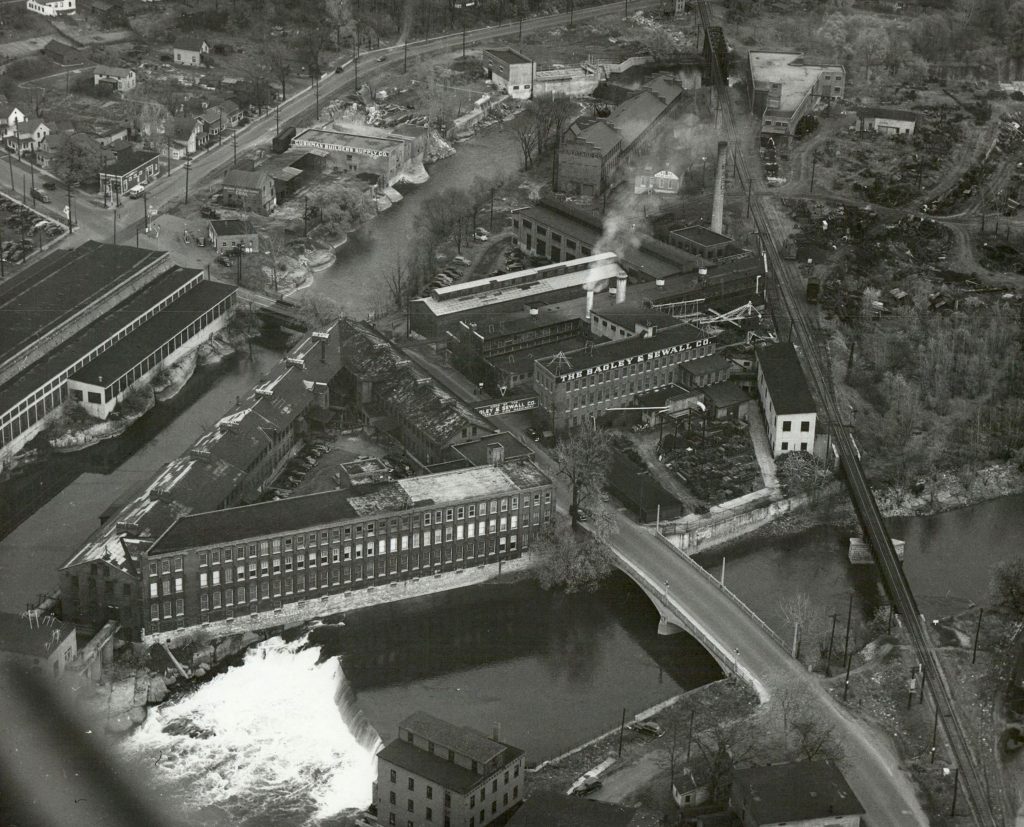
Inevitably, Excelsior Carriage closed its doors in late 1922, and the equipment and material were auctioned off the following year, with the Syracuse Surplus Co. purchasing the majority. Three years later, the company officially dissolved.
The real property (facilities) was later purchased by Abe Cooper. At that time, Cooper was the principal stockholder of the Bagley & Sewall Company and had purchased several buildings in the area, including the Shaughnessy Knitting Company on East Moulton Street. A few years before that, he purchased the Excelsior Carriage Company and Hinde & Dauch Paper Company, both of Sewall Island, giving him ownership of all on the island but the Northern New York Power Corporation.
Some years prior, Cooper had purchased the buildings and water power of the H. H. Babcock Corporation, the Watertown Spring Company, both at Factory Square and Lower Pearl Streets.
